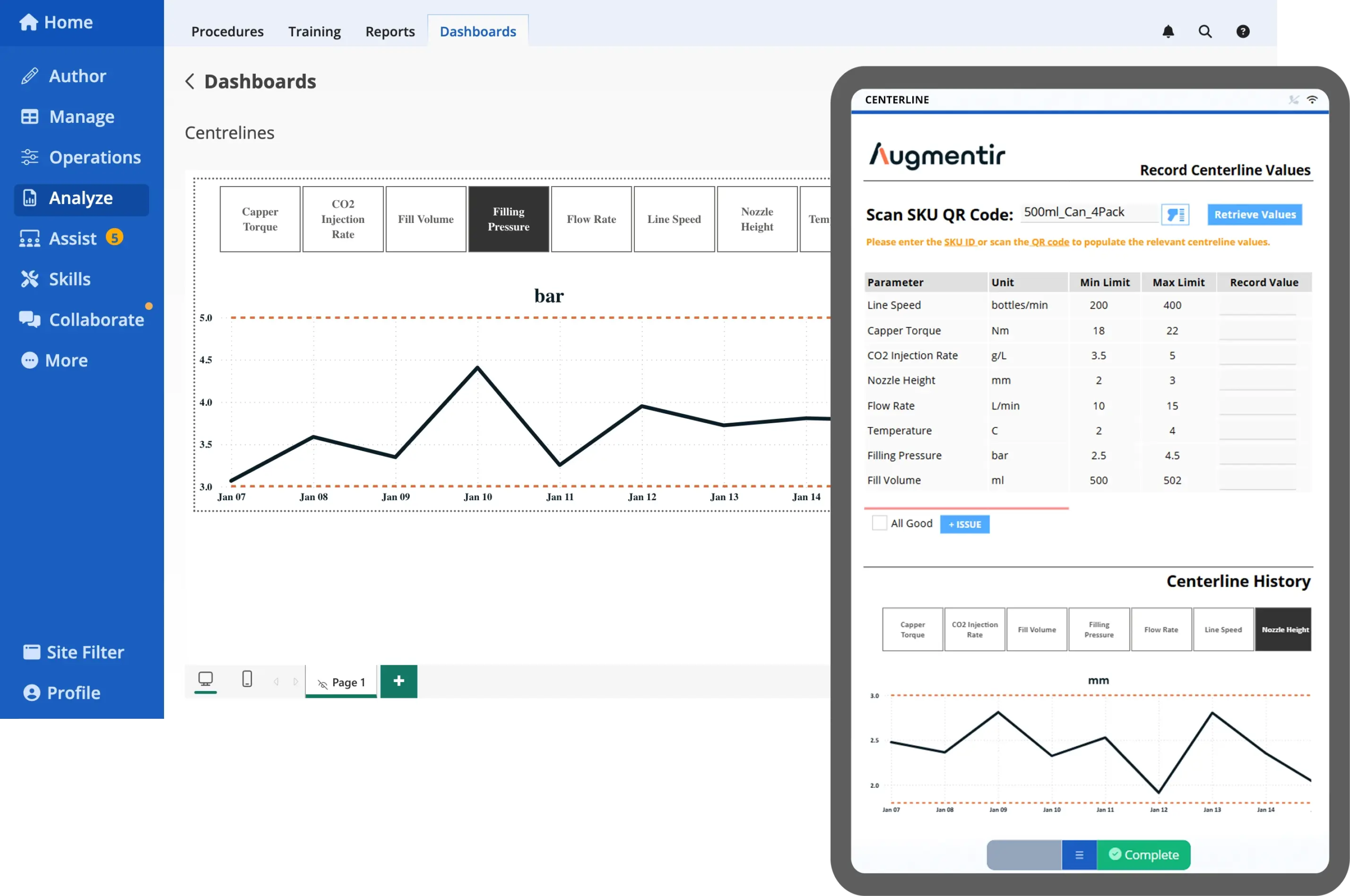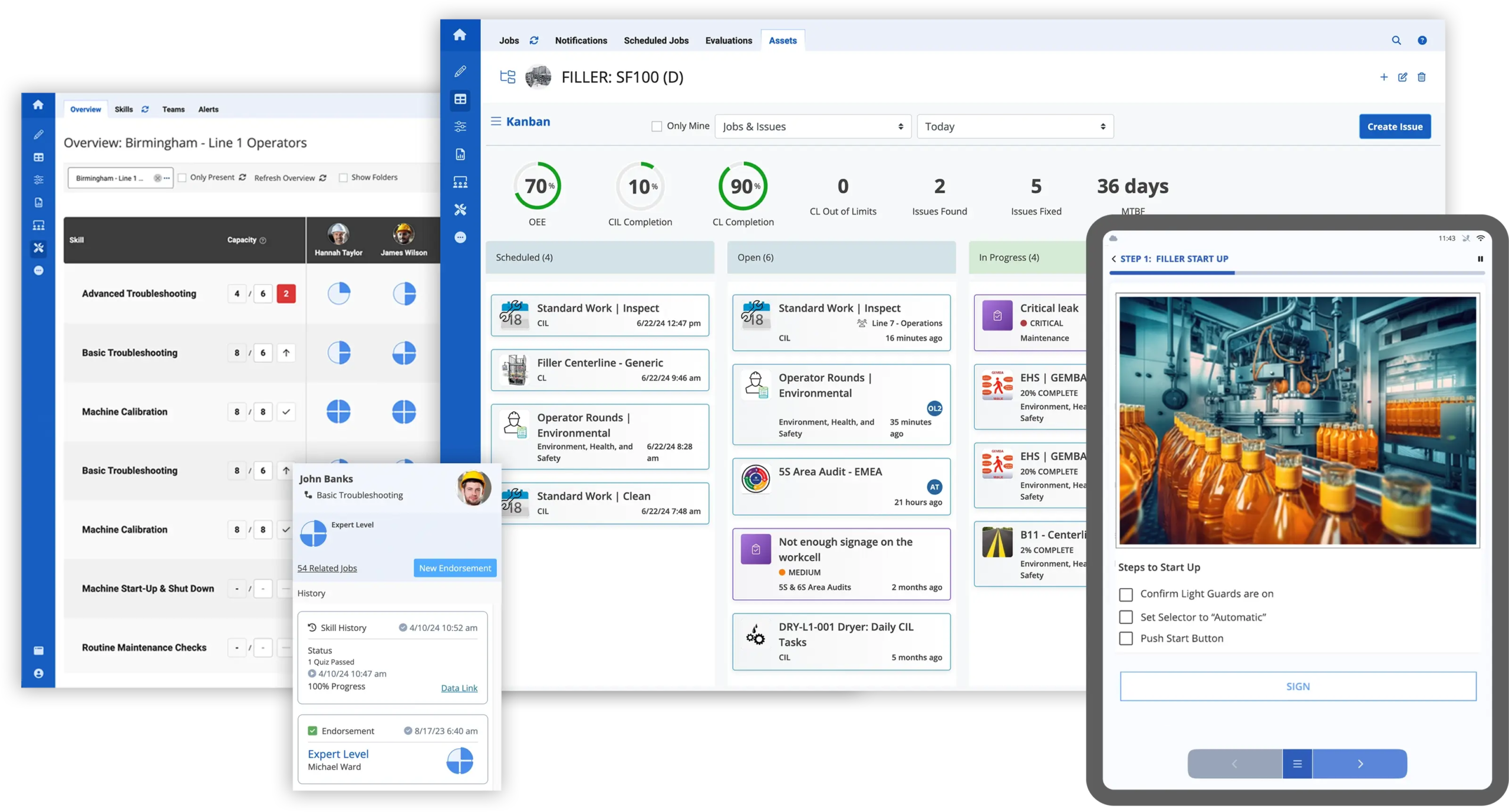Connected frontline operations platforms are helping manufacturers reduce downtime and provide a foundation for a holistic preventive maintenance strategy.
Centerlining in manufacturing is a methodology that uses standardized process settings to assure that all shop floor operations are carried out consistently.
For example, in manufacturing, it pinpoints which machine settings are needed to execute a given process and ensures operators implement those settings to avoid any defects on the shop floor. This works to decrease product and procedure discrepancies by improving machine efficiency.
The type of machine configurations that can be centerlined to create quality goods that meet customer expectations range from temperature, speed, and pressure settings to the proper alignment of guard rails. When applied to a procedure, centerlining can substantially increase the number of sellable items, secure uniform product quality, and decrease production costs.
In a nutshell, employing a successful centerlining process can help optimize plant operations and reduce mistakes in product creation.
Learn more about how centerlining can improve everyday operations, and how to centerline a manufacturing process to yield the best output, in the following sections:
- Centerlining methodology
- How manufacturing efficiency can be improved by centerlining
- How to centerline a manufacturing process
Centerlining methodology
Centerlining works by using specific machine settings per product (pressure, speed, temperature, etc.) to ensure processes are carried out the same way during each assembly line run.
Using the right centerline settings also has a side benefit: it lets operators identify problems as they happen. If workers know which process variables are triggering production delays, they can better control them to boost product quality output.
This can be achieved by creating a statistical process control chart to see which variables are causing interruptions to the assembly line and make any needed changes to the process. Creating a chart can also help workers identify procedures that are affecting the development of goods to ensure continuous improvement.
Centerlining goes hand in hand with total productive maintenance (TPM), a method which utilizes equipment, machine operators, and supporting processes to boost the quality and safety of production protocols.
How manufacturing efficiency can be improved by centerlining
Standardizing the appropriate machine settings can make everyday operations run more smoothly. For example, centerlining the requirements for each product can streamline changeovers, allowing workers to quickly reset their equipment and not lose time when switching to a new product run. This can prevent costly mistakes and reduce waste throughout the shop floor.
It also guarantees that all processes are completed in the same manner. Consistency helps ensure quality, especially when operators are setting up equipment for a production run. Failing to configure the right settings can increase the time for product changeovers and cause product deficiencies.
How to centerline a manufacturing process
Centerlining in manufacturing is a great way to troubleshoot product and procedure variations, oversee operations, and carry out statistical analysis to boost quality assurance and control.
Learn how to centerline a process by following the four steps below.
Step 1: Determine key process variables
It’s crucial to spot process variables that have the greatest effect on product quality to minimize any defects. Potential variables can include pressure, temperature, density, mass, and more.
Step 2: Identify machine settings for each variable
Then, look at which centerline settings can be applied to each process to ensure the creation of quality goods. Again, you’ll want to determine what has worked well in the past and use a statistical process control chart to set variable limits.
Important things to consider are: when the process has worked, which setting was best suited for that procedure, and how the two worked in conjunction with one another.
Step 3: Assess variable impact on production process and product
After you’ve identified the appropriate machine settings, it’s time to monitor how each variable impacts the production process and final product creation. Start by analyzing which assembly line runs yielded the highest production rate, factoring in things like equipment idle time, scrapped parts, rework, etc., to gauge what works and what needs improvement.
It’s vital that you have accurate, clear data to analyze. We recommend digitizing your centerlining process and results to correctly quantify the performance of each variable.
Step 4: Ensure centerline settings are always applied
Lastly, make sure that all operators are aware of and educated on how to best implement a centerlining process so that the right settings are applied each time. Failure to do so can result in mistakes and product deficiencies down the line. It’s best to provide all the necessary resources, steps, and training from the get-go to avoid costly errors. Digital work instructions and connected worker tools are a great way to ensure that operators are properly equipped to perform centerlining procedures.
At this stage, your manufacturing firm should have the proper reporting techniques to evaluate product quality against centerline procedures.
Interested in learning more?
Augmentir is a connected worker solution that allows industrial companies to digitize and optimize all frontline processes that are part of their TPM strategy. The complete suite of tools are built on top of Augmentir’s patented Smart AI foundation, which helps identify patterns and areas for continuous improvement.



